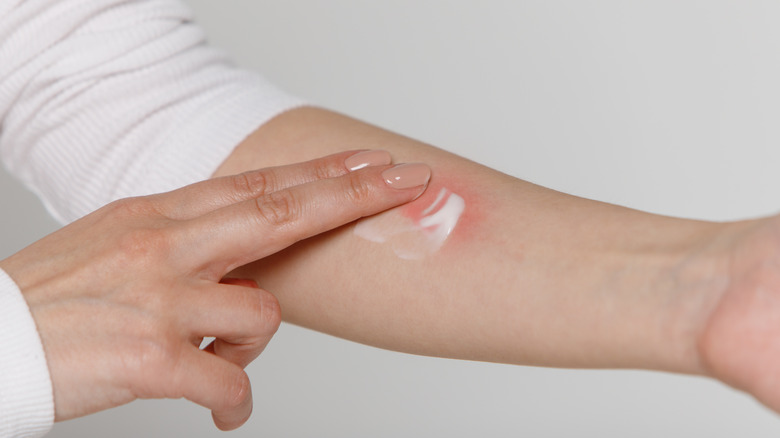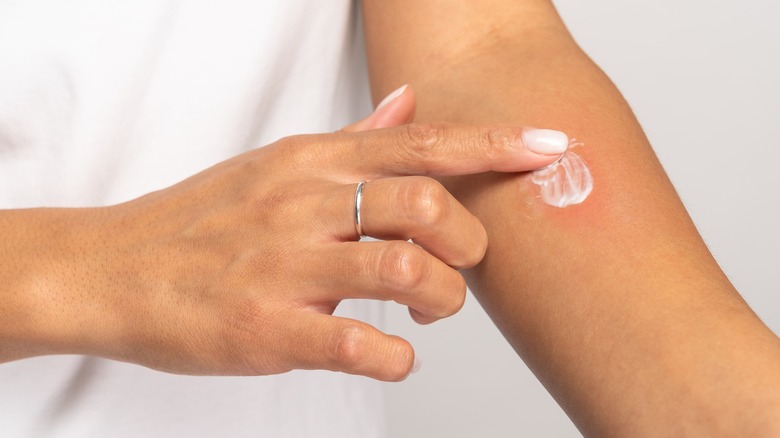Why You Should Always Patch-Test New Skincare Products
When you choose your facial cleansers, such as serums, toners, mists, masks, and moisturizers, just to name a few of the popular epidermis-targeting options out there, you surely aim to find products that bring out the best in your skin. On the other hand, you also need to avoid products that can cause unwanted and perhaps unexpected issues. We're talking about everything from dryness and red spots to itching and burning, according to GQ. That's not to mention peeling, blisters, and even swelling.
When something irritates your skin, it can actually be sparked by two separate problems. "The first is an irritant contact dermatitis, which happens quickly — within minutes to hours of exposure. The second is an allergic contact dermatitis, which takes repeated exposure to the product and days to develop — at least 4 days," board-certified dermatologist Carly Roman of Seattle's Modern Dermatology explained to GQ. While other factors can also contribute to a negative reaction, like sweat drying on your skin or using products on a face that haven't been washed first, you definitely need to know what ingredient can produce immediate or gradual reactions.
That's why it's so important to do a patch test before you add new products to your skincare routine.
A patch test can save your skin from pain and damage
While you might assume that there are a few random ingredients in skincare products that might cause an occasional negative reaction, the American Academy of Dermatology (AAD) points out that there are actually over 15,000 substances that could be potentially problematic when it comes to allergic reactions alone. Um, yikes!
Fortunately, performing a patch test can help you figure out if any of these ingredients are something you need to stay away from as much as possible to avoid potential pain and damage to your skin. A patch test is simply using a small amount of a product on your skin and keeping an eye on how your body reacts, according to Medical News Today. If you don't have a bad reaction, then everything might be fine and dandy, and you may have found your new favorite product. If you're concerned that you might have a delayed or gradual reaction, then you can keep your patch-testing going over the course of a few days to see if any issues develop.
Although a patch test is something that a dermatologist can do for you, you can also easily do a patch test in the comfort of your own home. However, be sure to perform it properly and safely so you can truly rely on the results.
How to perform a proper skincare product patch test
While there's no doubt that performing a patch test for new skincare products is important, it's also key to take proper steps while conducting your test. The American Academy of Dermatology (AAD) lays out a process that you can follow that comes straight from skincare experts.
Suggesting that you perform a full test over a period of a week to 10 days, experts explain that you'll want to use the product you're testing two times each day. Be sure to apply the amount that you would regularly use to one spot that's no bigger than a quarter. Beyond that, opt for an area where the product will stay on your skin, such as on your arm. For cleansers, follow the product's directions or, otherwise, leave the product on for around five minutes before washing it away.
If you have a minor, temporary reaction, this may simply be your body getting used to the ingredients. On the other hand, if you have a severe or ongoing reaction, get it off your skin as soon as possible. You can also use a cooling jelly or compress if needed. Following that, toss the product out and possibly visit a dermatologist if you want more help tracking down the ingredient that's clearly no friend to your skin.


